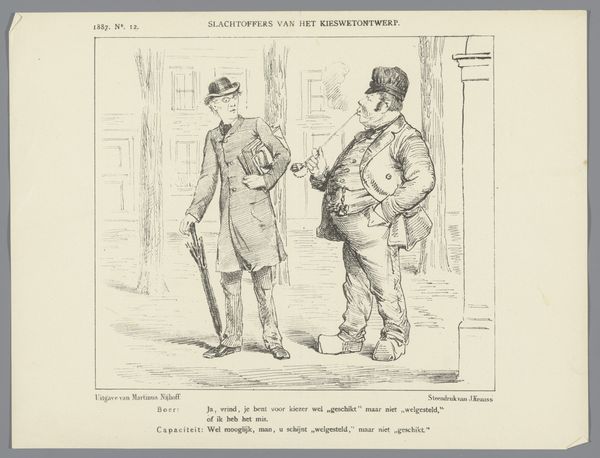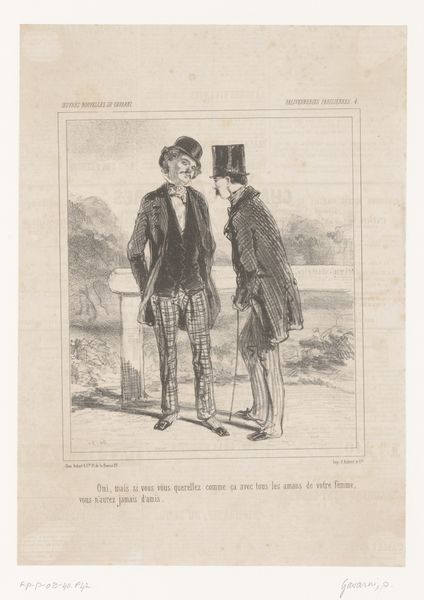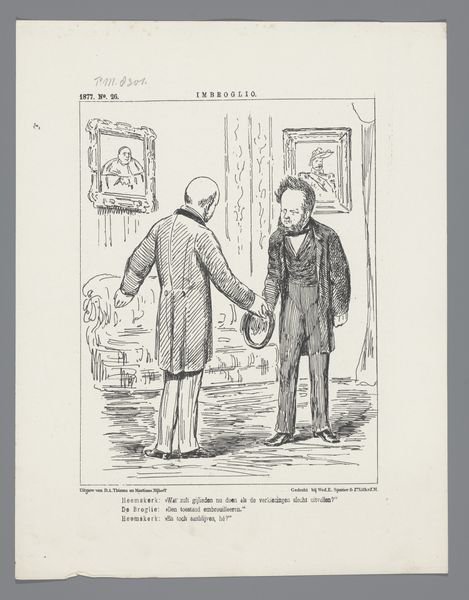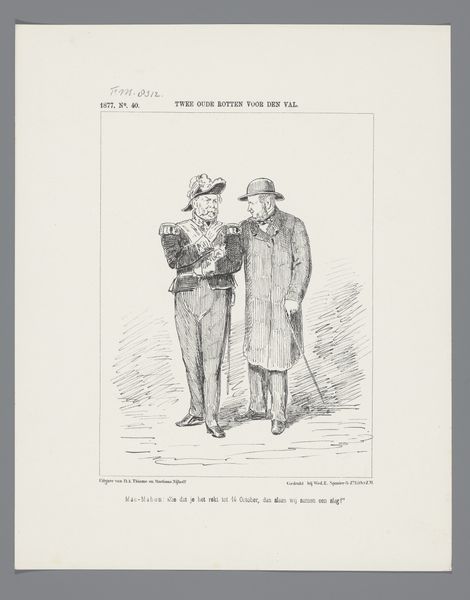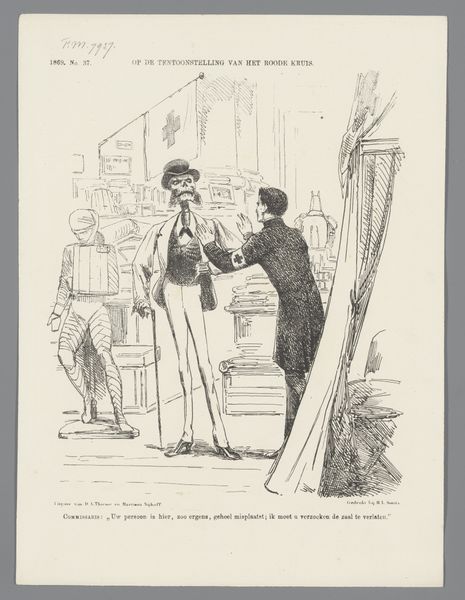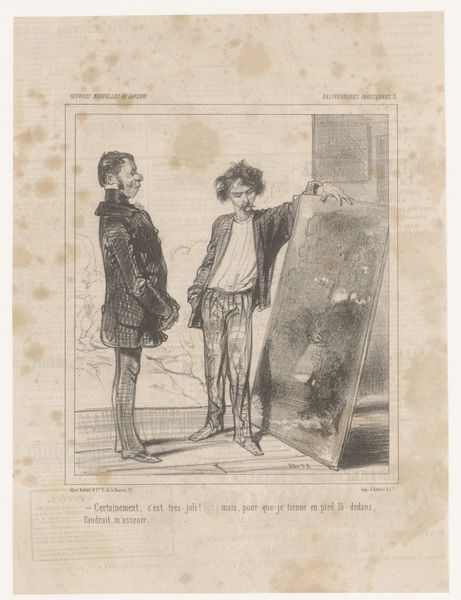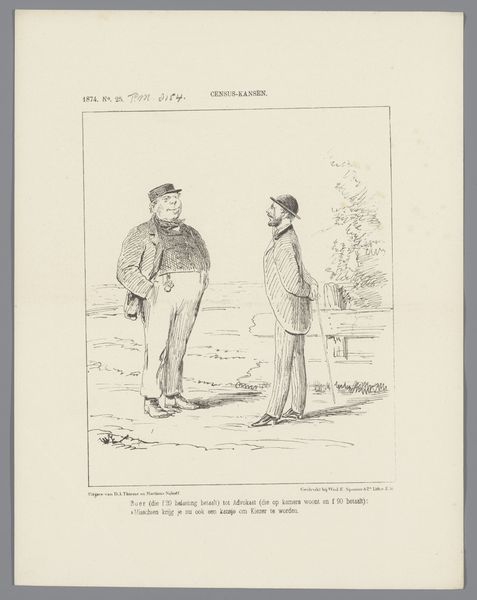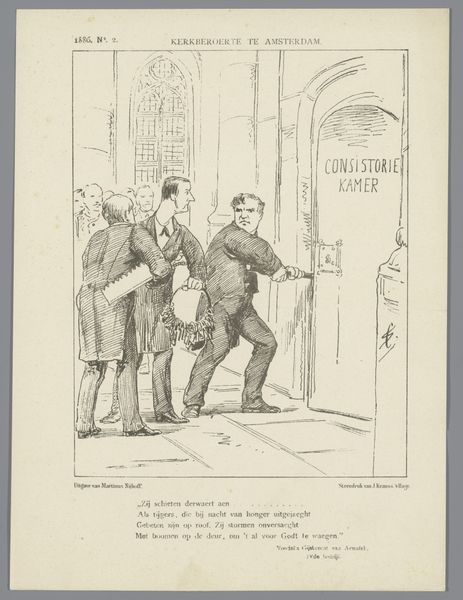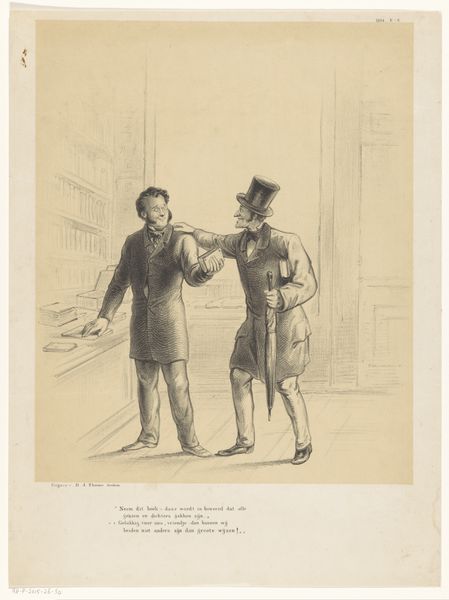
Spotprent over de geruchten van annexatie van België en Luxemburg door Frankrijk en Duitsland, 1870 1870
0:00
0:00
drawing, lithograph, print, paper, ink
#
drawing
#
narrative-art
#
lithograph
# print
#
caricature
#
paper
#
ink
#
genre-painting
#
history-painting
#
realism
Dimensions: height 275 mm, width 215 mm
Copyright: Rijks Museum: Open Domain
Curator: Let's delve into this lithograph from 1870, titled "Spotprent over de geruchten van annexatie van België en Luxemburg door Frankrijk en Duitsland," which translates to "Cartoon about the rumors of annexation of Belgium and Luxembourg by France and Germany". It is a drawing by Johan Michaël Schmidt Crans. My initial thought is how darkly humorous and charged it is with a very specific historical anxiety. Editor: Indeed. Looking at the composition, I’m immediately drawn to the etching quality. The stark contrast and dense crosshatching speak volumes about the urgency of its production, the materiality underscoring a rapid response to political rumblings. It looks inexpensive to make, almost like propaganda. Curator: Precisely! Observe how the artist employs caricature. We see two figures, presumably representing France and Germany, each clutching what seems to be the keys or deeds to neighboring countries. Keys…deeds…emblems of authority, rendered in ink, laden with symbolic weight, suggesting a potential symbolic imprisonment. Editor: Right. Paper, ink, and the lithographic process allowed for quick dissemination. The physical artifact embodies anxieties about labor and the shift in national identity prompted by economic pressures and political shifts in that period. Were these cartoons mass-produced to sway public opinion perhaps? Curator: Undoubtedly. The style, rooted in realism, conveys the tangible fears of the time. Consider the positioning of the figures in front of a building labeled "Luxembourg" with the door open; and "Leopold", name of the king, on the left. All signifiers of what's at risk. And there is also a small, dim moon. All together create an atmosphere that hints to impending danger and covert action. Editor: The very lines that form these characters betray that danger. And their clothing is common! These are not aristocratic figures; instead they resemble commoners, workingmen, enacting a land grab as if it is just business as usual. How ordinary it all feels. It really implicates a broader societal consent in their power play. Curator: An excellent point. This drawing, while small, opens a vast window onto the socio-political dynamics of the 19th century, revealing the visual strategies employed to capture collective sentiment and manipulate political discourse. The power of art… Editor: And its accessibility. Through cheap materials and quick reproduction, its impact on society deepens and spreads much further. The very existence of this print raises urgent questions about how objects like these mold, reflect, and influence history's tumultuous path.
Comments
No comments
Be the first to comment and join the conversation on the ultimate creative platform.
